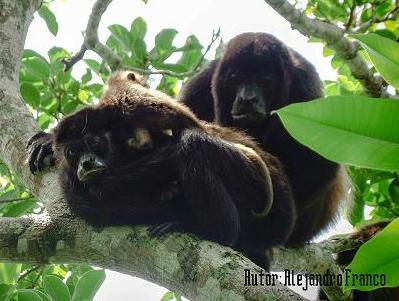Study species
The studied subspecies was the Mexican mantled howler monkey (Alouatta palliata ssp. mexicana) (Merriam 1902). Its geographic range includes south-eastern Veracruz, central and western Tabasco, western Chiapas and eastern Oaxaca. It is listed as critically endangered in the IUCN's red list, presenting a decreasing population trend mainly due to habitat loss (Cuarón et al. 2008).
Studied subjects
Between 1988-1989 the Universidad Veracruzana released 10 Mexican mantled howler monkeys on Agaltepec island as part of a translocation project (Rodríguez-Luna et al. 1993). Currently, the free-ranging population of howler monkeys living on Agaltepec island consists of approximately 55-65 individuals, which are distributed in one group (A) of 32 individuals and a second group (B) of around 25 individuals, both groups containing members of all ages and sexes.
In this project only group A, which was composed of 21 adults (seven males and 14 females), five juveniles (15-29 months old) and six infants (0-14months old), was studied (Figure 2). All the members of group A were catalogued before data collection in order to be able to identify them individually.

Responsible for this page:
Director of undergraduate studies Biology
Last updated:
05/12/15
